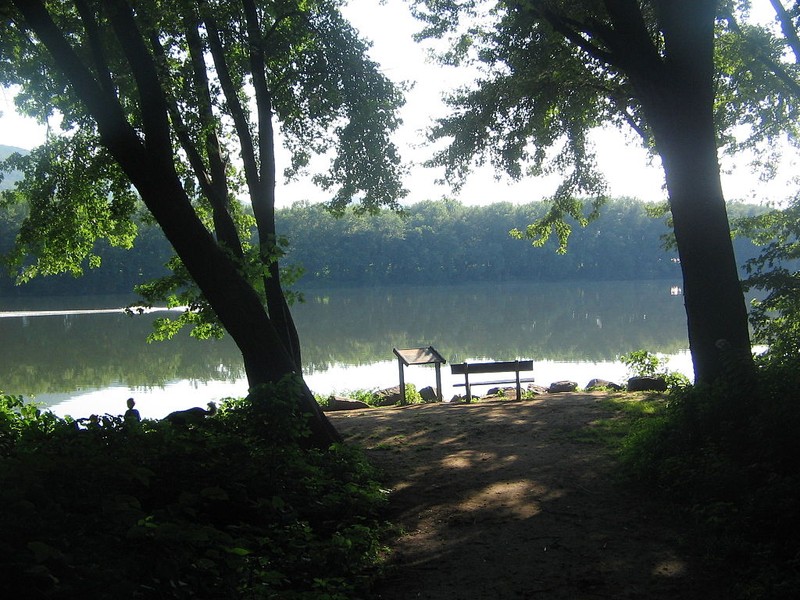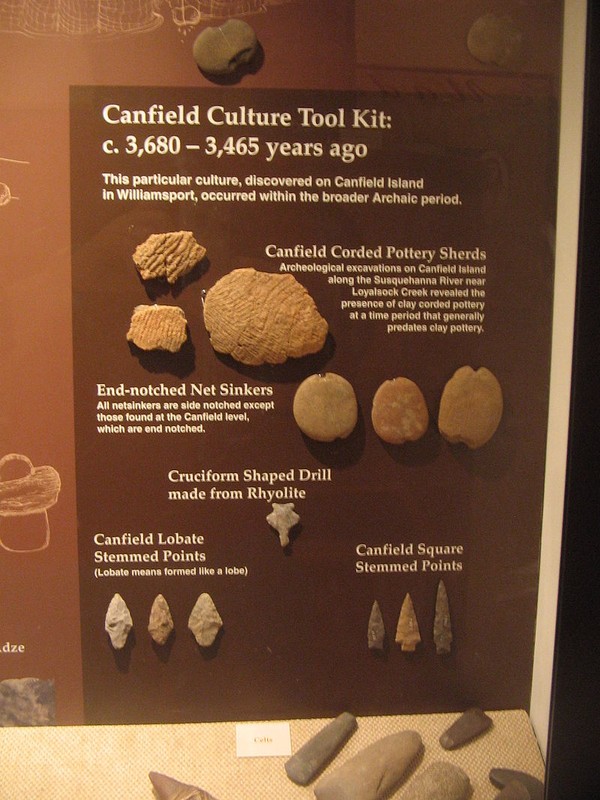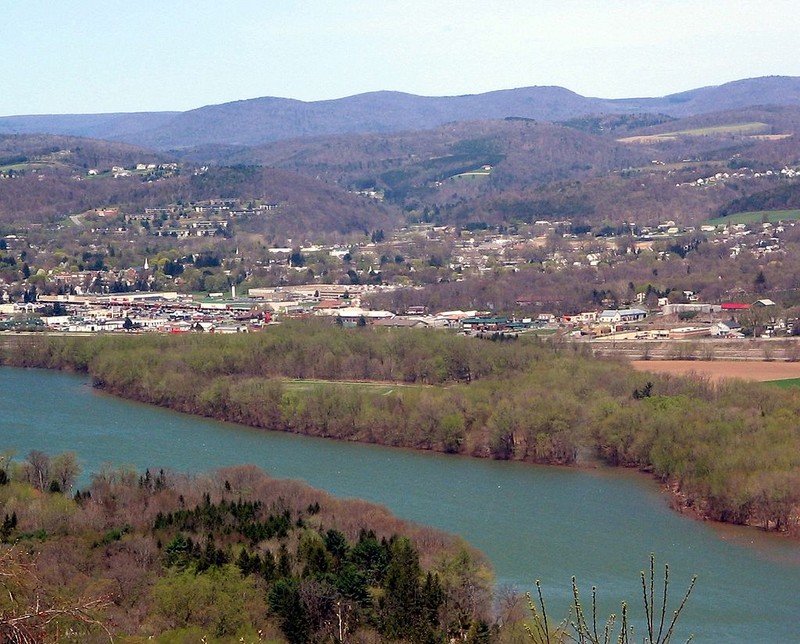Canfield Island Site
Introduction
Text-to-speech Audio
Images
Interpretive signs on the island

Some artifacts found on the island

View of Canfield Island from the across (south side) the west branch Susquehanna River

Backstory and Context
Text-to-speech Audio
The island was first revealed to be a potential archaeological site as a result of a preliminary investigation performed by an exploratory group of members of the Society for Pennsylvania Archaeology who first visited the island in 1958. Beginning in 1960 and continuing periodically through 1980, a series of excavations yielded artifacts to a depth of 49 feet below the surface, and surface artifacts were extant throughout the island. Since 1980, occasional investigations have continued at the site; a team from Lycoming College in Williamsport carried out an excavation on the island in 2003.
Excavations yielded discoveries from a set of phases that was more complete than could be found at most comparable Pennsylvania sites. While ceramics are rare at the site, the presence of charcoal from a wide range of phases has provided a basis for dating charcoal found at many other sites in the state. Another significant discovery was a set of massive hearths amid large numbers of fishing nets, which has led to the proposal that Canfield Island was a major fishery.
Archaeological investigations have concluded that Canfield Island was inhabited during the Late Archaic Period (approximately 2,500 years BC) and a fragment found at the lowest point of investigation, while it cannot be dated conclusively, may have originated in the Early Archaic period. Various phases of the Woodland period appear at the site, and evidence exists of occupation by the Susquehannock who still inhabited eastern Pennsylvania after the arrival of Europeans in the region.
In 1982, Canfield Island was listed on the National Register of Historic Places in recognition of the amount of information it had yielded and because of its potential to yield even more information. The site is today part of Riverfront Park, a Loyalsock Township park that includes an archaeology-themed trail on the island. Since 2003, local Native Americans have held an annual pow-wow on the island.
Canfield Island is an artificial formed by the digging of a ditch near the side of the West Branch Susquehanna in the early twentieth century; today, this ditch forms the northern half of the island's shoreline, and the West Branch forms the southern half. Much of the island has been cultivated during the historical period, but forests today cover a significant portion of the island. It has frequently received deposits from the West Branch. The island has a total area of 21 acres.
